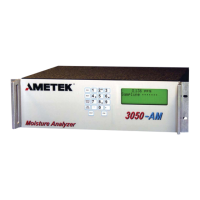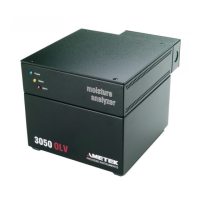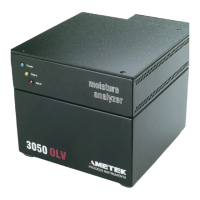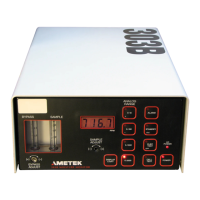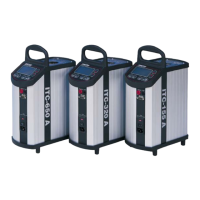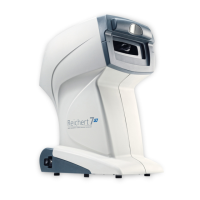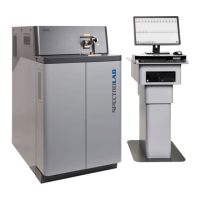PN 305892901, Rev S
Dew/Frost Point Measurements
Dew point values are calculated from the moisture concentration measure-
ments (PPMV) and the sample or process pressure. For temperatures below
0 °C, the 3050-RM uses equations to determine the water vapor pressure over
ice, rather than over super-cooled water. Thus, the 3050-RM reports a frost-
point temperature consistent with the physical form of the condensed phase
in a real process stream.
Water in super-cooled liquid state will only exist as a transient species, as
the rst bit of condensate starts to form on a smooth-chilled surface (i.e.,
the true method of measuring a dew point).
Given more time, the dew layer will turn to ice if the temperature is below
the freezing point.
While the frost-point temperature will be higher than the dew point tem-
perature, the exact magnitude of the dierence will be a function of both
the pressure and dew/frost point temperature.
Another consideration, when using the 3050-RM Analyzer to calculate dew/
frost point temperatures, is the sample or process pressure. The range of
process pressures allowed by the 3050-RM is restricted for many Sample gases.
Many gases liquefy at relatively low pressures, so calculating a dew/frost point
temperature for these compounds has no value. Therefore, the 3050-RM is
designed to report an error condition, the process pressure alarm, to alert the
user to conditions that result in ambiguous dew/frost point values.
Calculation of Dewpoint Values for Hydrocarbon
Streams
The calculation of dewpoint values for hydrocarbon streams is covered by
several standards. Because there are dierences between the dewpoint values
calculated with the older North American standard (ASTM D1142, which is
based on the work published in IGT Research Bulletin #8) and the new Europe-
an standard (ISO 18453, which is based on the work presented in GERG-Water
Correlation: GERG Technical Monograph TM14, 2001), AMETEK has provided
a means of using either method in the 3050-RM product. Specically, in the
gas list we have cited two (2) separate entries for natural gas. The rst entry is
labeled “Natural Gas”, and will provide dewpoint/frostpoint values consistent
with ASTM D1142. The second entry is labeled “Natural Gas GERG”, and will pro-
vide dewpoint/frostpoint values consistent with ISO 18453. All other aspects of
analyzer performance are identical for both of the two (2) natural gas listings.
Overview | 1-9
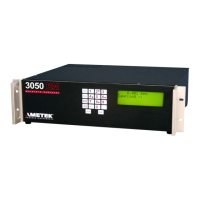
